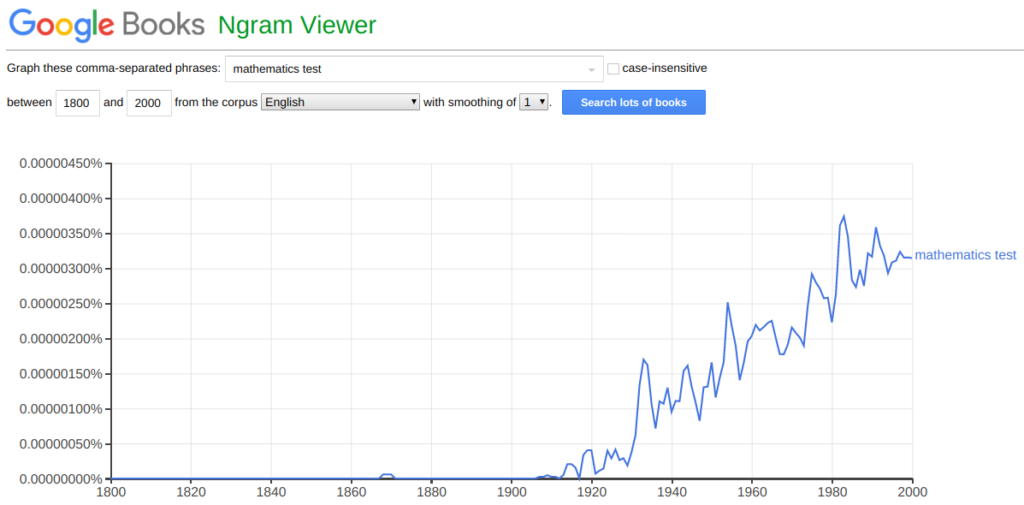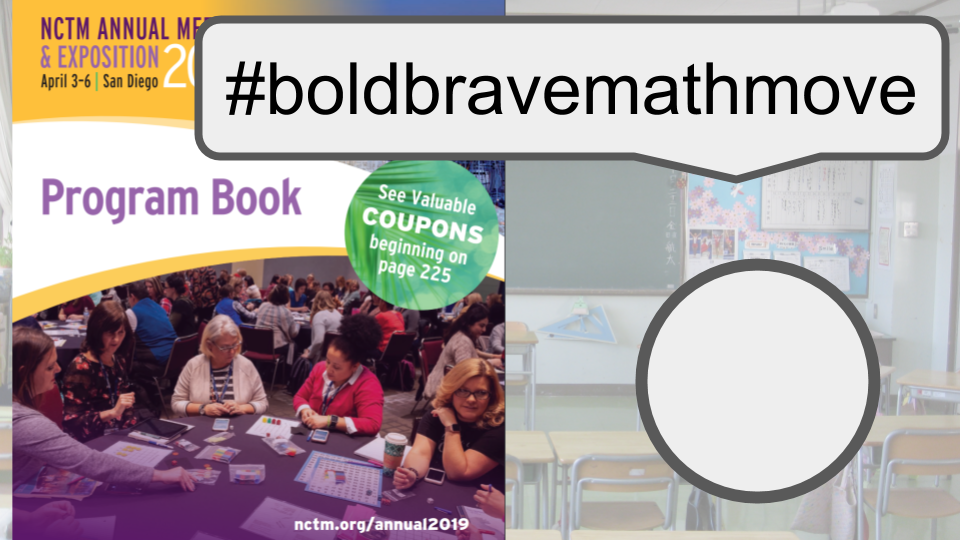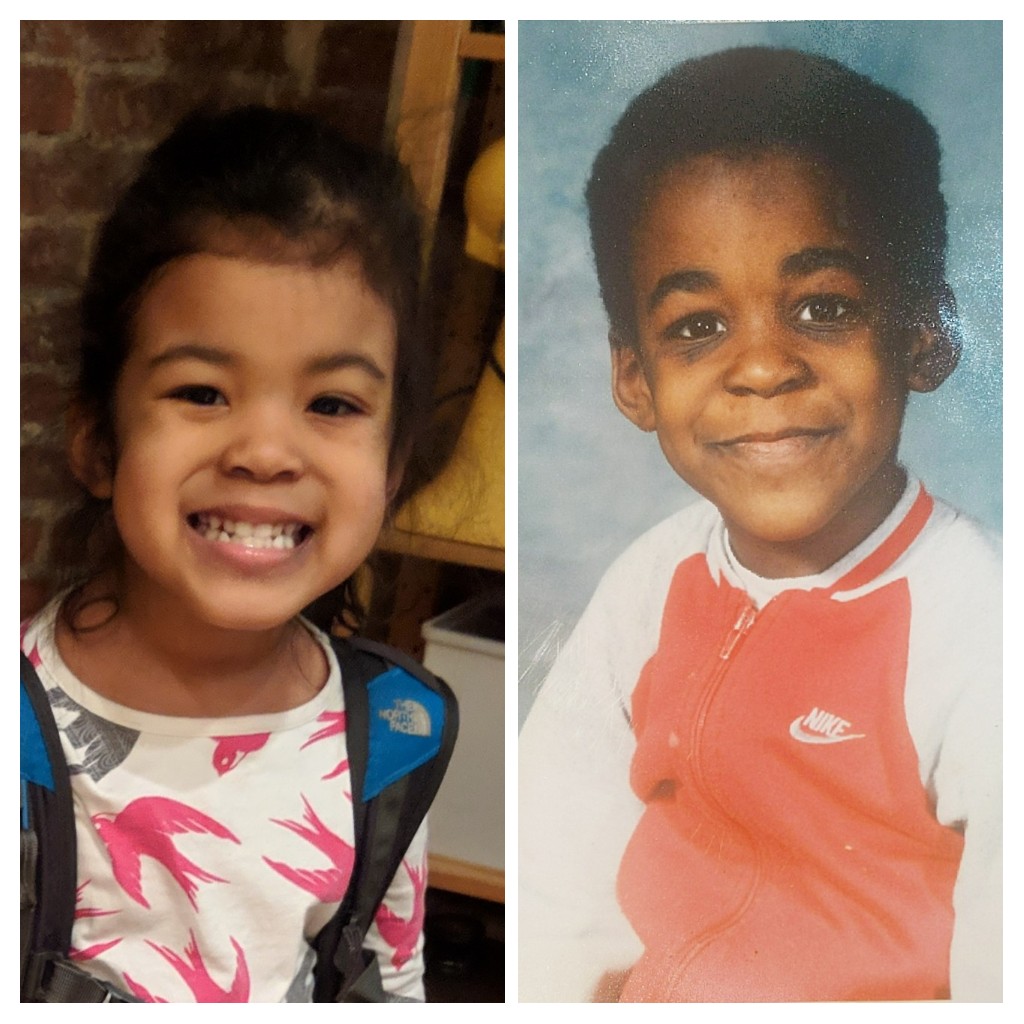Our school is beginning the 4th term. This means all new classes, all new kids and another fresh crack at the #ThinkingClassroom. I was debating about trying a different class this cycle, but the planning for this new class failed to materialize as I spent too much mental energy prepping for #NCTMSD2019. Repeating the class is important to me because the cycle ended in a way that felt unresolved.
A more deliberately comfortable classroom
Two very different students kids struggled from the beginning last cycle. It seemed like they didn’t know how to say they felt uncomfortable. My best guess was that the source of their discomfort could be one of three things:
- The whole VNPS routine
- Being in a math class in general
- Other things going on in their lives.
With the first two, a warm vibrant environment and lots of interesting math problems should be enough to win kids over. With the third, it seems like a larger effort for making the kids feel valued and competent would be useful. For the two students who struggled, their parents or their social worker made very clear that they had some other things going on in their lives, and no one had an easy answer for any of those things. Ultimately they both struggled with all 3 of those possibilities, and neither was able to gather enough momentum for the magic of the Thinking Classroom to have the same effect that other students were experiencing.
With more time, the discomfort may have gone away, but our block-scheduled, 8-week cycles made it hard for kids to really lock in. Instead students who aren’t excited to share or work with the group, a strong desire to ‘finish’ and get back to their seat, and frequent trips to the bathroom, college counselor, nurse, etc. One of these two kids stayed in the class a little more than the other, but they both struggled mightily on the final project. By the end of the last 8 weeks it was pretty clear that the uncomfortable students missed out on the practice of solving a lot problems, understanding the quadratic vertex form among other big mathematical ideas of the class, and a lot of the relationship building to support them as they finished the class. One of them scraped by and passed, the other did not.
Despite having the most positive experience I’ve had in years, I could only think about these kids as I looked to teach this class agian. They didn’t succeed with the math, which was disappointing, but they also didn’t succeed with this method. The primary reason I adopted the Thinking Classroom was to repair their negative relationship with math, but the last cycle seemed to just confirm that relationship. That doesn’t mean it didn’t work! I’m confident that I need to be more explicit about the kids relationship with math and look to find ways to help kids jump back in to the class despite their absences. I’ll hopefully be able to get some feedback on my improvements this time around as well as the student who failed last cycle signed up to take my class again.
Some new tweaks
To launch the thinking classroom, I decided to spend more time trying to explain the model to students. Today I decided to spend more time explaining why we are going to learn this way, and even made a space for talking about the class and it’s structure on the note sheet.
This time the note sheet will be different as well. I am going to make it a daily point to collect notes, and some kind of feedback about the class, and then get in the habit of the responding to what students say. Opening a space for conversation with kids will be good, and I can try to download them towards some positive note-taking habits so they don’t have to learn the hard way. The notes will hopefully be for them, but hopefully they will also be a space for students to let me know if the class isn’t working for them and where I can suggest strategies other than leaving class.
We teach 90 minute classes, which is too long to do VNPS all class, so I will break the class up into different acitivities. Today I took the chance to do a proper icebreaker in the middle of class. This gave a chance for everyone to get to know each other. We did a speed dating activity, which would be about half way down this powerpoint, after which kids worked in groups based on who they partnered with in the activity.
Going forward I’m going to ask the kids to read about math and what their thoughts are. I’m going to give them my ignite talk, make clear that we are taking time to play with math, and ask them to write about the research about some of the Thinking Classroom ideas (VRG, VNPS, etc) as it’s always good to include some literacy, and it may help the kids who are uncomfortable find more reason to engage.
Open questions
As this first class ended, I’m realizing that many parts of the thinking classroom work is still a work in progress. Here are some questions I still have.
I am pretty unresolved about how to deal with kids who are uncomfortable, or who may have anxiety or other conditions. How do I get those kids who are uncomfortable to be involved and invested?
It also seems like however the groups share out, the male students end up dominating the conversation and the ideas. How can I structure the tasks, and the class time to make the female students feel empowered?
The Thinking Classroom structure gives a lot of opportunity for the teacher to tailor activities for each of the students at the different boards. In trying to help any student in my class, there is space for me to provide scaffolding in real time that can support or push students as needed. It’s a great idea, but… How do I actually use my questioning and my question-answering to make sure all student are staying in flow?
Lastly, I think my struggles with the last class was that I assumed that this new approach to teaching would create a new classroom culture, like uploading a fresh new operating system on to the computer. In reality, the thinking classroom is really like an app and the larger operating system is what the kids and I think math class really is. If I am not doing the work of deliberately creating the environment, communicating expectations, and building relationships, I’ll basically be allowing all those old ideas and mindsets about math remain operating in the background. It’s like trying to upload the newest version of photoshop on an old Compaq that is running Windows ME. So I need to upgrade my classroom culture. How do can I change the culture of my class in order to help the students change their relationship with math?
All of this is going to have to be pretty difficult to do given my school and everything that comes with it (8 week classes, kids who are uncomfortable with math, project based classroom). I’d love any ideas you might have, feel free to leave any thoughts you have in the comments!





